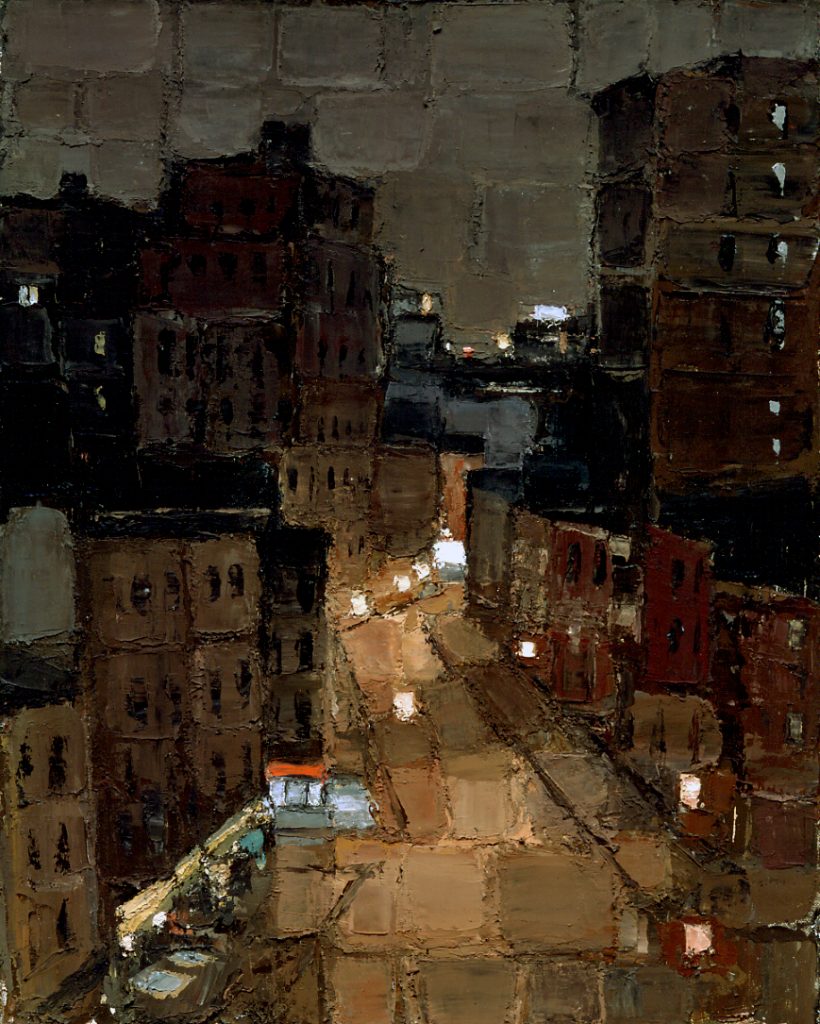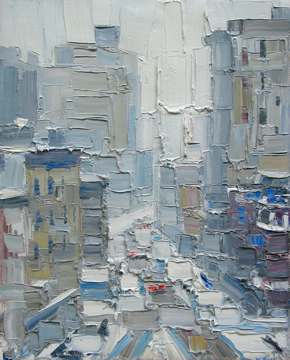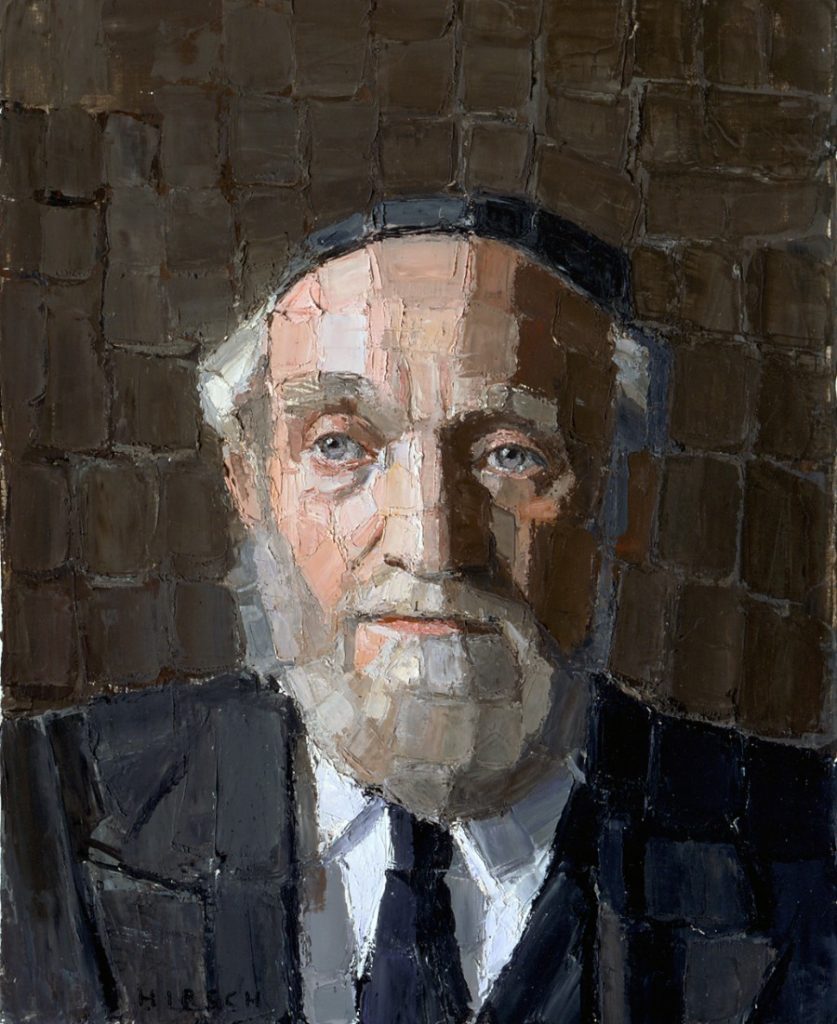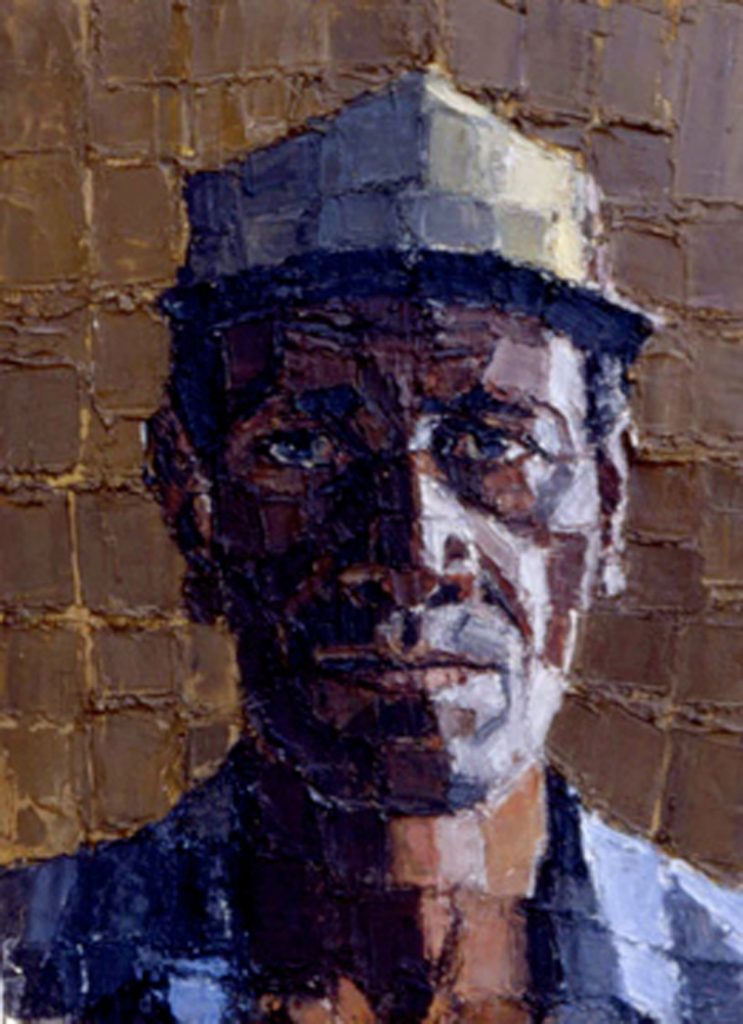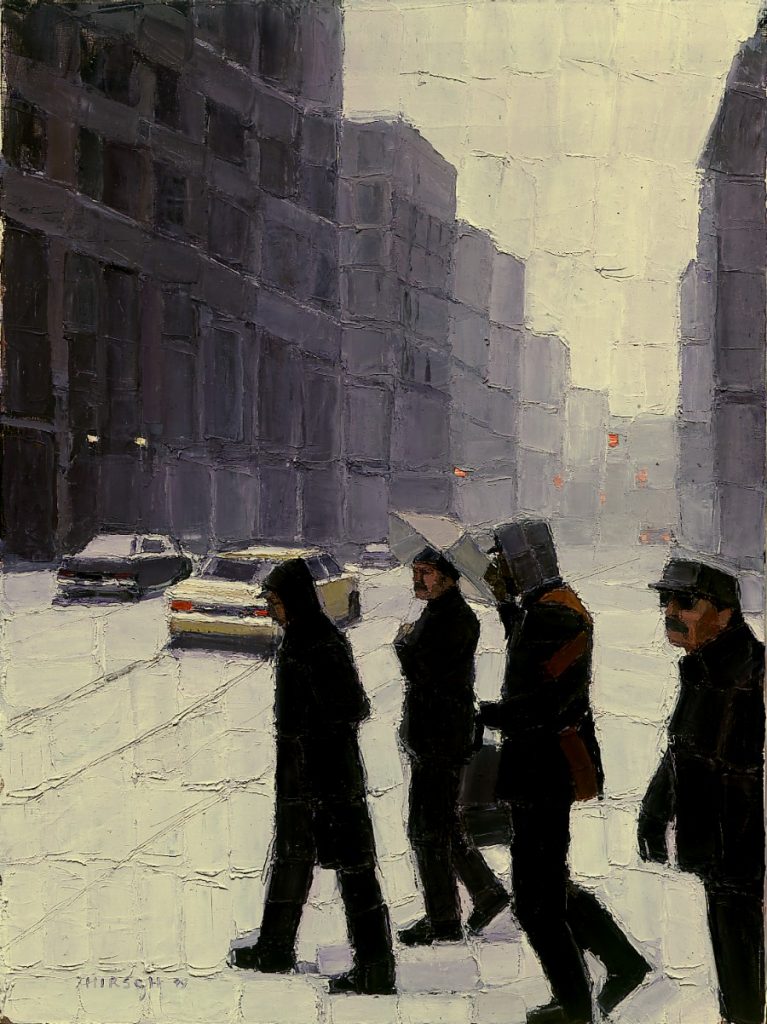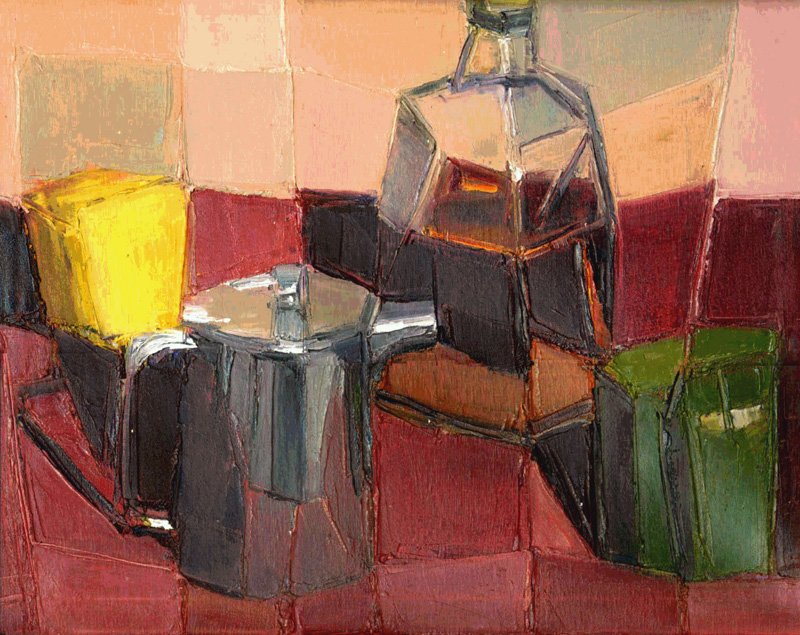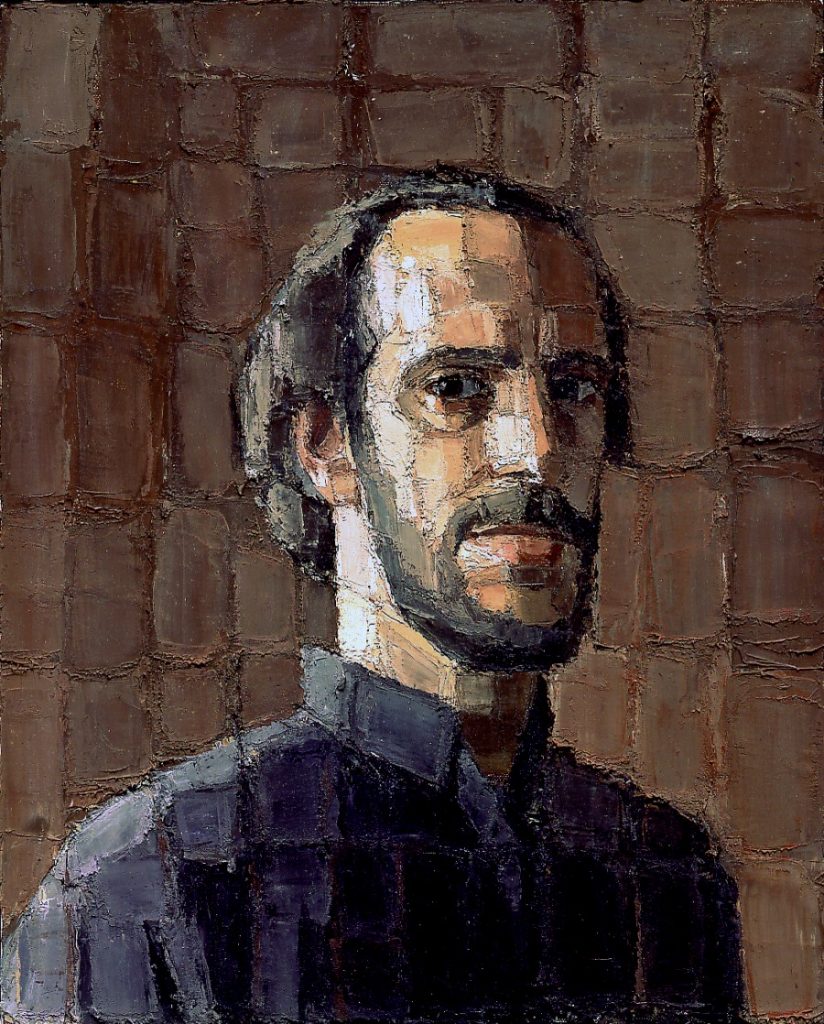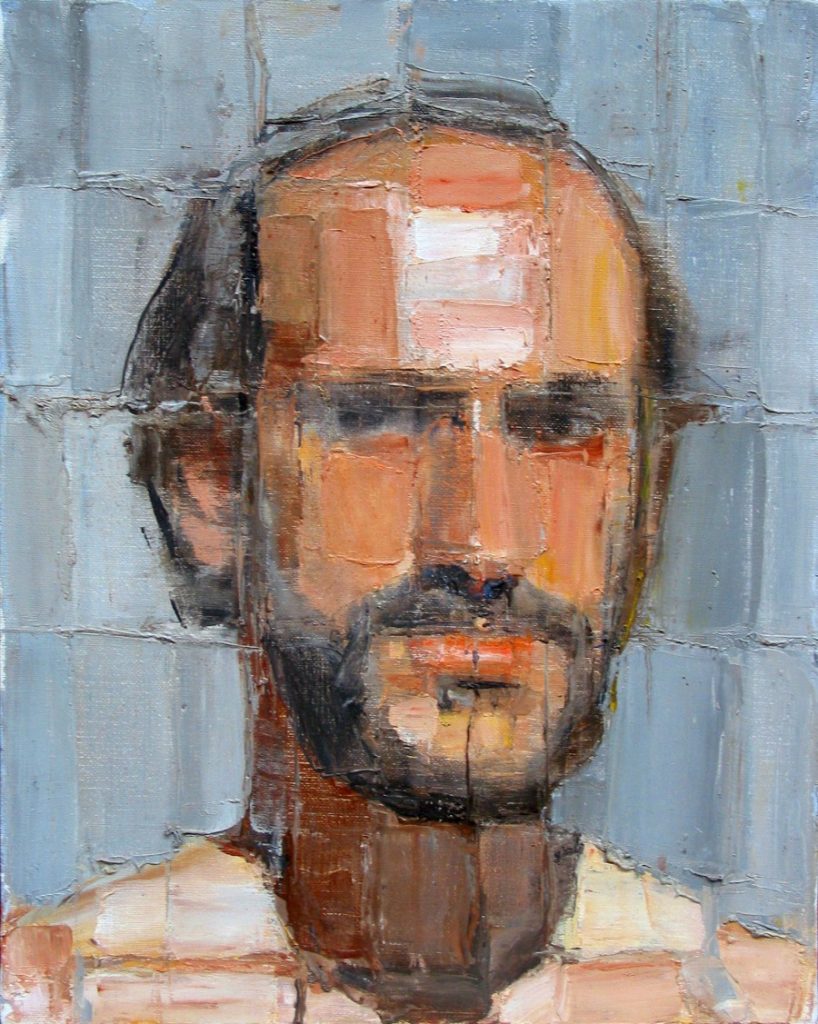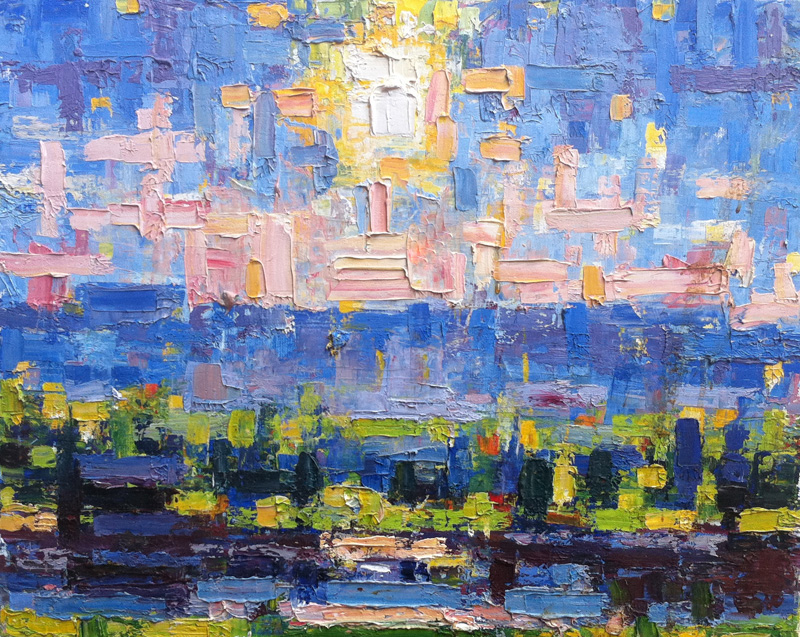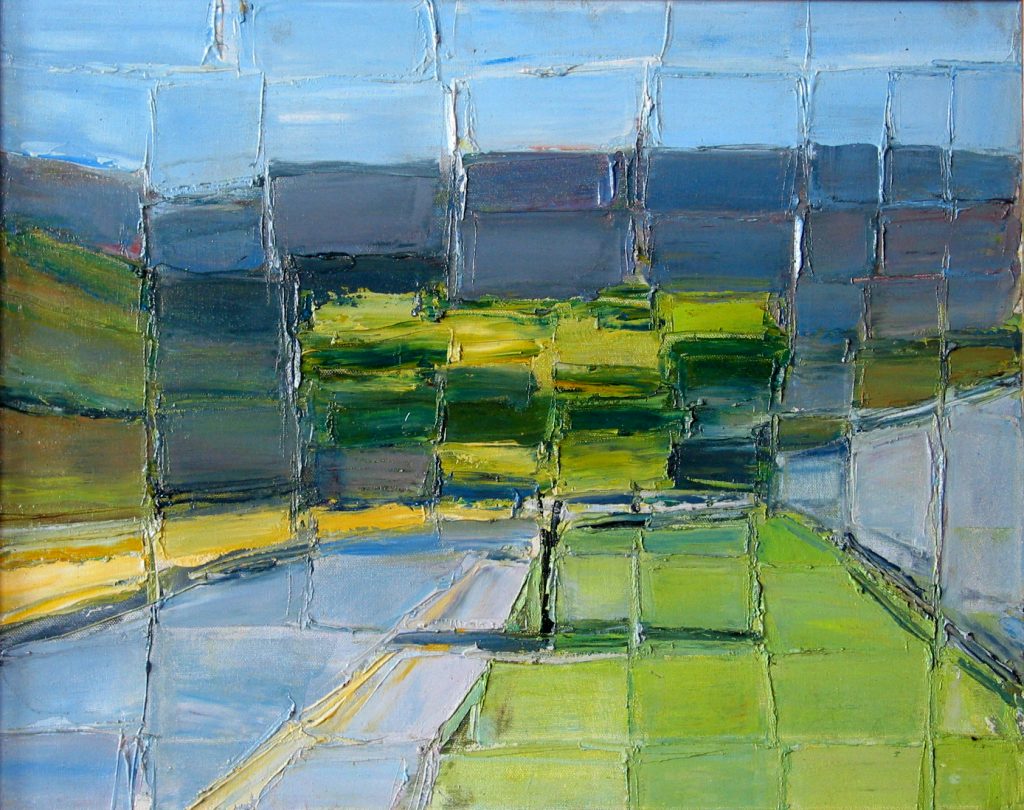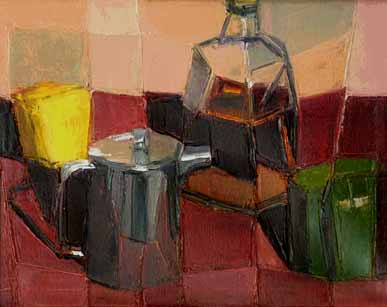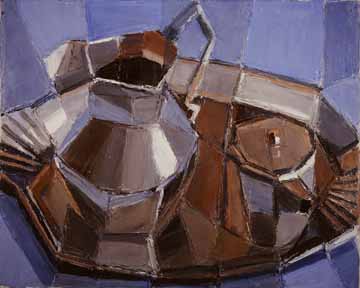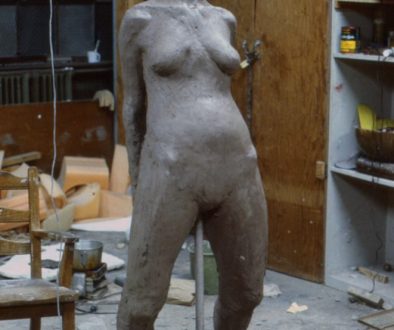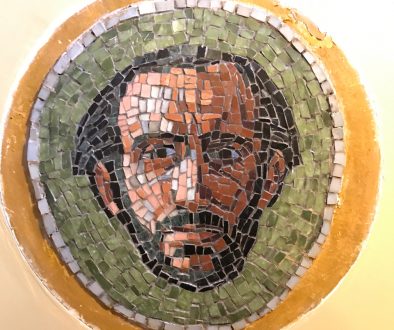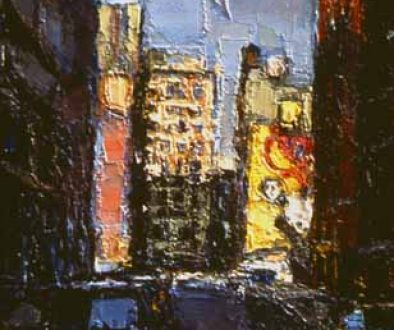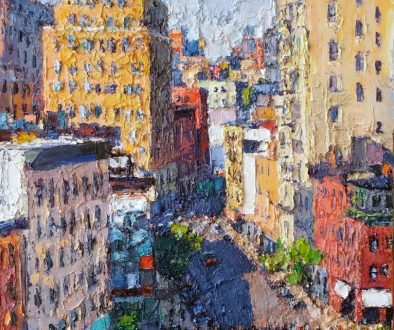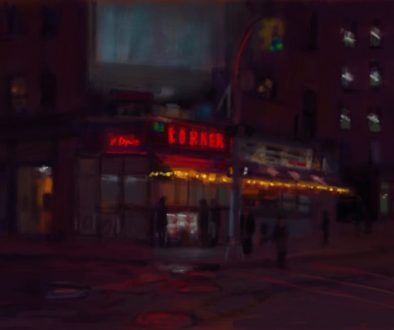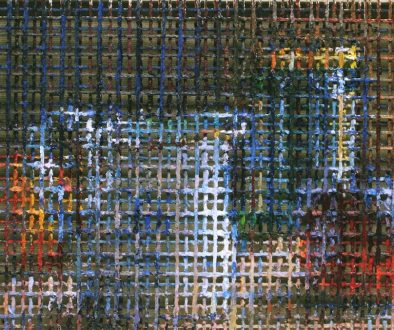New Cubism 1997-1999
While Cezanne and African Art inspired Picasso and Braques’ cubism, digital technology and compartmentalization in our time inspires its own new form in many contemporary artists’ works by way of the grid, the squaring off of abstract forms and geometric figuration. Unconsciously by osmosis, this form crept into my portrait and landscape painting. Consciously, however, this cubism was a solution to my long-term fascination with surface and depth. The act of applying these slabs of paint with the palette knife simultaneously buried and revealed the image and the eyes move back and forth from the object to the surface, creating a sense of space. If we stop our eyes from moving for a moment, everything is double except forthe single point of focus. Visual space is created not by the combination of 2 separate images from each eye in the brain, but the adjustment and movement of this point of focus as our 2 eyes wander across the room. Closer objects necessitate more visual convergence, farther ones less. Our eyes move so quickly that we don’t notice it. I think Cezanne’s late style and classical cubism also grew out of this kind of analytical seeing and slowing vision down to study the overlapping of forms. Feeling space in a flat painting is forcing our eyes and brain to orient themselves in 2 different places at the same time creating a movement that “penetrates” the picture.


